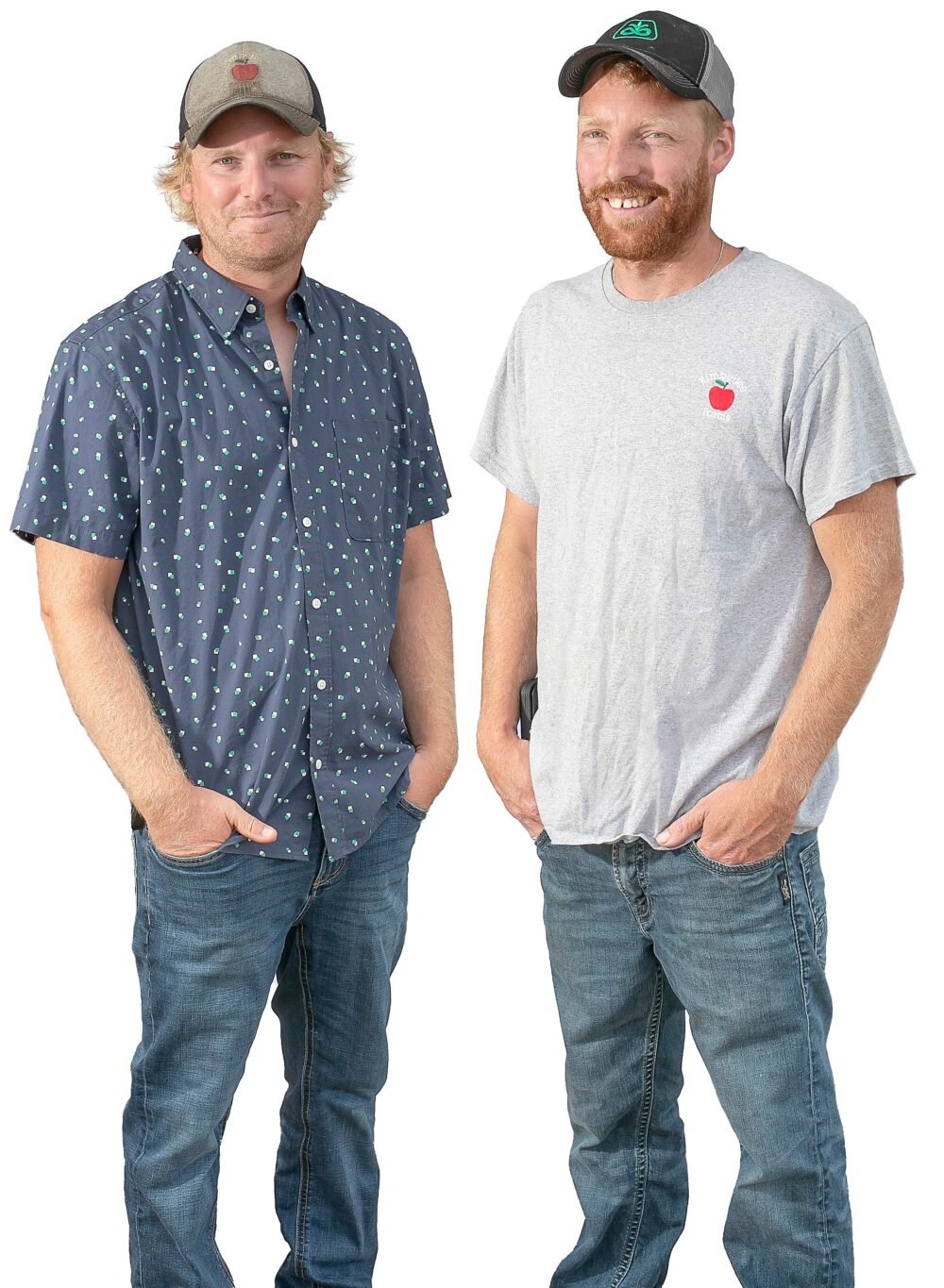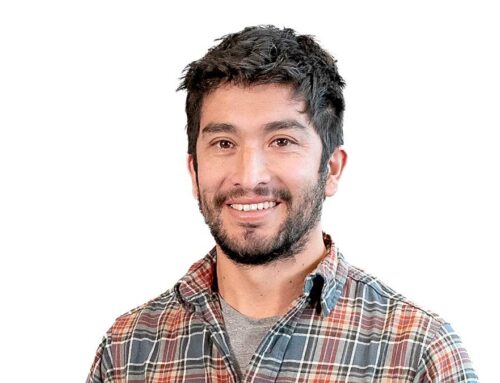family background/ The brothers are third-generation farmers in the Annapolis Valley of Central Nova Scotia, Canada. They are the sons of Janette and Timothy Pearson and the grandsons of Janette’s father, Pieter van Oostrum.
age/ Travis (at left) 33, Jacob 34
hometown/ Woodville, Nova Scotia
crops/ Apples, grains
role/ Farm owners
business/ Kimberlee Farms
How did you get your start?
Travis
Right out of high school, I went to agricultural college and earned a two-year farm management diploma in enterprise management, to get some of the business skills that are required for farming.
Jacob
I stayed home and worked with my family at Canard Orchards for seven or eight years before working on Kimberlee Farms. Getting to work with my grandfather was pretty nice, and I learned a lot.

What did you learn from your family?
Travis
Grandpa was a pretty progressive grower and one of the first to start planting high-density orchards in Nova Scotia. Some of the varieties used in those systems were Golden Delicious, Jonagold and Macs on 16-foot by 8-foot plantings.
Then about five to 10 years later the rows were being planted 14-foot by 4-foot. He had a unique way of doing things, and we gained a lot of knowledge from that. Since then, we’ve stuck with a 12-foot by 2.5-foot spacing.
One of the things we’ve noticed during that change is that it depends on the variety. Some are better suited for 14-foot by 4-foot structure, but for Honeycrisp, that 12-foot spacing is the majority of the stuff we’re growing now.
What new things are you doing at the farm?
Travis
When we started taking some ownership in the farm, we got a hedger and a harvest-assist machine. So, we started with mechanical-type pruning in conjunction with hand pruning to get our canopy a little more in check.
Jacob
We started using machines before we really had the orchard in a suitable place for that type of technology or equipment.
Travis
We were running it down 14-foot by 4-foot rows that weren’t grown to have machine work done.
The limbs on the bottom were a little bit heavier and we had to beat them down a bit to make the orchard fit those newer types of technologies. There are some things that we don’t love about new tech. For example, having a lot of this newer gear is great when it works, but when something breaks down, it’s stuff we can’t fix.
Jacob
You’re more efficient when you use the technology, but you’re down more often as well. We know the reliability of this stuff isn’t gonna last forever.
I ask myself, “How long does this computer have?” If you’re on a five-year program, then the machine hopefully will have paid itself off in that time frame.
What kind of challenges have you encountered?
Travis
The first thing that we really wanted on our farm was a platform, we wanted to cut down on some ladder work and get the workforce a little bit more efficient and cover more acres in a day.
Jacob
We had a small group in the harvest crew that just wasn’t comfortable on ladders, so it would make them way more efficient than what they were doing before.
At the beginning, one problem was training people to use the equipment, because a lot of them had no idea how to use the stuff. It was a struggle at first to get everybody on the same page.
While on the machines, you have to work as a team instead of just one guy out there with a picking basket. Everyone has to know what the other guy is doing and be able to communicate quickly.
Travis
It takes work understanding how to visually split up the tree with the harvest-assist tools. For instance, when the bottom guy is doing this section and the top guy is doing this section, you don’t have to reach through, because you’re gonna get that on the next pass.
Also, to make this machine more efficient, you don’t want to reach through and grab everything and then during the next pass you’re going down the row with your hands in your pockets.
It was a lot of work to get everybody on the pace. In the end, we really enjoyed adoption of this technology and what those machines have done for the farm.
—by TJ Mullinax






Leave A Comment